�
Table of Contents
Introduction
Discovering FreeCAD
What is FreeCAD?
Installing
Installing on Windows
Installing on Linux
Installing on Mac OS
Uninstalling
Setting basic preferences
Installing additional content
The FreeCAD interface
Workbenches
The interface
Customizing the interface
Navigating in the 3D view
A word about the 3D space
The FreeCAD 3D view
Selecting objects
The FreeCAD document
Parametric objects
Import and export to other filetypes
Working with FreeCAD
All workbenches at a glance
Traditional modeling, the CSG way
Traditional 2D drafting
Modeling for product design
Preparing models for 3D printing
Exporting to slicers
Converting objects to meshes
Using Slic3r
1.1
1.2
1.2.1
1.2.2
1.2.2.1
1.2.2.2
1.2.2.3
1.2.2.4
1.2.2.5
1.2.2.6
1.2.3
1.2.3.1
1.2.3.2
1.2.3.3
1.2.4
1.2.4.1
1.2.4.2
1.2.4.3
1.2.5
1.2.6
1.2.7
1.3
1.3.1
1.3.2
1.3.3
1.3.4
1.3.5
1.3.5.1
1.3.5.2
1.3.5.3
2
Using the Cura addon
Generating G-code
Generating 2D drawings
BIM modeling
Using spreadsheets
Reading properties
Writing properties
Creating FEM analyses
Creating renderings
Python scripting
A gentle introduction
Writing Python code
Manipulating FreeCAD objects
Vectors and Placements
Creating and manipulating geometry
Creating parametric objects
Creating interface tools
The community
1.3.5.4
1.3.5.5
1.3.6
1.3.7
1.3.8
1.3.8.1
1.3.8.2
1.3.9
1.3.10
1.4
1.4.1
1.4.1.1
1.4.1.2
1.4.1.3
1.4.2
1.4.3
1.4.4
1.5
3
�
Introduction
A FreeCAD manual
Note: The manual has been moved to the official FreeCAD wiki which is now its new home.
If you wish to propose edits, please do them there, as this repository will be kept only for
generating the ebook versions and will not be directly edited anymore.
Introduction
FreeCAD is a free, open-source parametric 3D modeling application. It is made primarily to
model real-world objects, ranging from the small electronic components up to buildings and
civil engineering projects, with a strong focus on 3D-printable objects. FreeCAD is free to
download, use, distribute and modify, and its source code is open and published under the
very permissive LGPL license. The data you produce with FreeCAD is fully yours, and can
be recovered without FreeCAD.
FreeCAD is also fundamentally a social project, as it is developed and maintained by a
community of developers and users united by their passion for FreeCAD.
This manual is an experiment at taking the opposite way from the official FreeCAD
documentation wiki. The wiki is written collaboratively by dozens of community members
and, like most wikis, it contains huge amounts of information, but is very hard to access and
navigate by newcomers. This makes it a precious resource for reference, but not a very
practical tool to learn FreeCAD. This manual will walk you through the same information
available on the wiki. However, we hope that the more step-by-step pace, based on
examples, and the more unified tone given by a smaller number of authors, will make it more
suitable for a first contact with FreeCAD, and that it will become a perfect companion for the
wiki.
This manual has been written for the current stable version of FreeCAD which is version
0.16.
All the contents of this manual are published under the Creative Commons 4.0 license, and
can be freely used, downloaded, copied, and modified. The source files of this manual are
hosted on github.
This book has been written mostly by Yorik, but using a lot of information built by FreeCAD
users, mostly from the FreeCAD wiki. The real author of this book is actually the whole
FreeCAD community!
4
�
Introduction
5
�
Discovering FreeCAD
Discovering FreeCAD
6
�
What is FreeCAD?
What is FreeCAD?
FreeCAD is an open-source parametric 3D modeling application, made primarily to design
real-life objects. Parametric modeling describes a certain type of modeling, where the shape
of the 3D objects you design are controlled by parameters. For example, the shape of a
brick might be controlled by three parameters: height, width and length. In FreeCAD, as in
other parametric modelers, these parameters are part of the object, and stay modifiable at
any time, after the object has been created. Some objects can have other objects as
parameters, for example you could have an object that takes our brick as input, and creates
a column from it. You could think of a parametric object as a small program that creates
geometry from parameters.
FreeCAD is not designed for a particular kind of work, or to make a certain kind of objects.
Instead, it allows a wide range of uses, and permits users to produce models of all sizes and
purposes, from small electronic components to 3D-printable pieces and all the way up to
buildings. Each of these tasks have different dedicated sets of tools and workflows available.
FreeCAD is also multiplatform (it runs exactly the same way on Windows, Mac OS and Linux
platforms), and it is open-source. Being open-source, FreeCAD benefits from the
contributions and efforts of a large community of programmers, enthusiasts and users
worldwide. FreeCAD is essentially an application built by the people who use it, instead of
being made by a company trying to sell you a product. And of course, it also means that
FreeCAD is free, not only to use, but also to distribute, copy, modify, or even sell.
7
�
What is FreeCAD?
FreeCAD also benefits from the huge, accumulated experience of the open-source world. In
its bowels, it includes several other open source components, as FreeCAD itself can be
used as a component in other applications. It also possesses all kinds of features that have
become a standard in the open-source world, such as supporting a wide range of file
formats, being hugely scriptable, customizable and modifiable. All made possible through a
dynamic and enthusiast community of users.
The official website of FreeCAD is at http://www.freecadweb.org
Read more:
About FreeCAD: http://www.freecadweb.org/wiki/index.php?title=About_FreeCAD
List of features: http://www.freecadweb.org/wiki/index.php?title=Feature_list
Screenshots and user cases: http://forum.freecadweb.org/viewforum.php?f=24
8
�
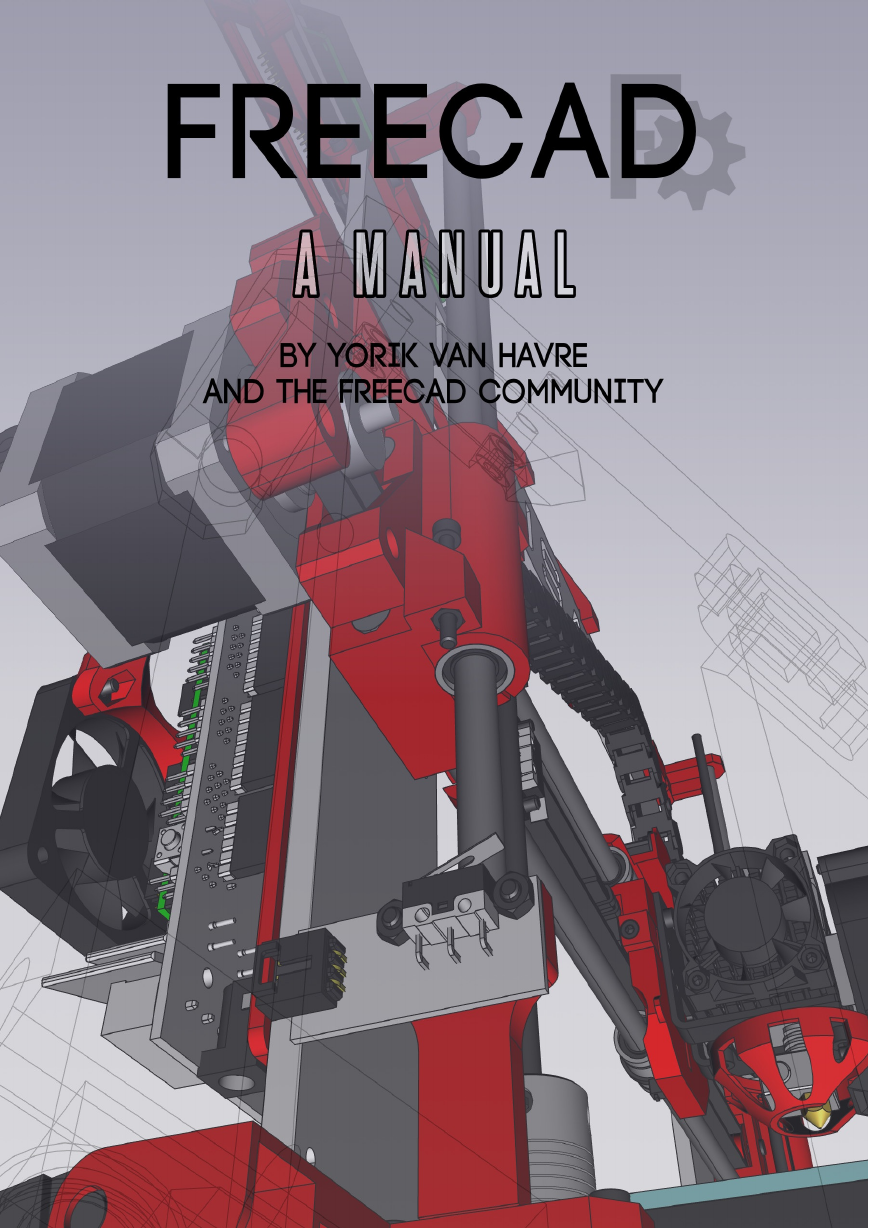
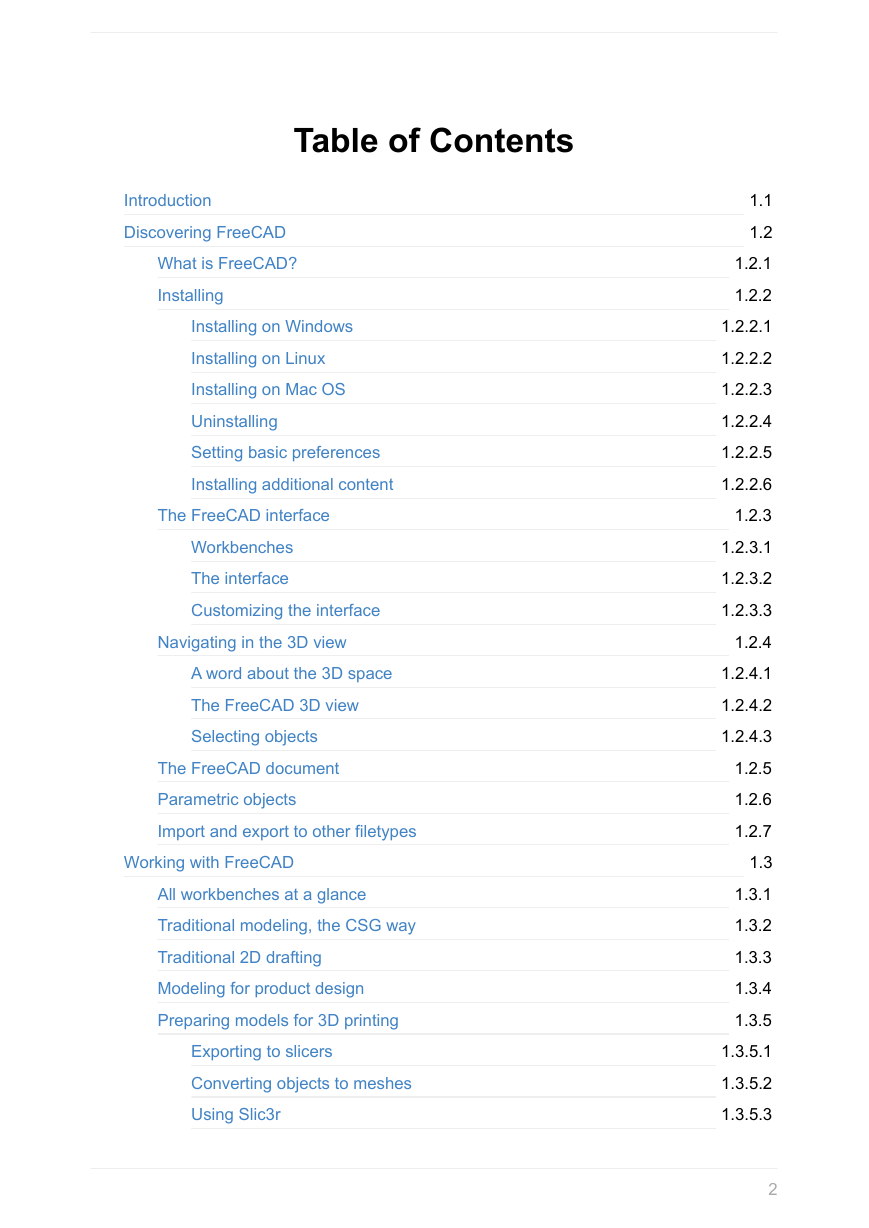
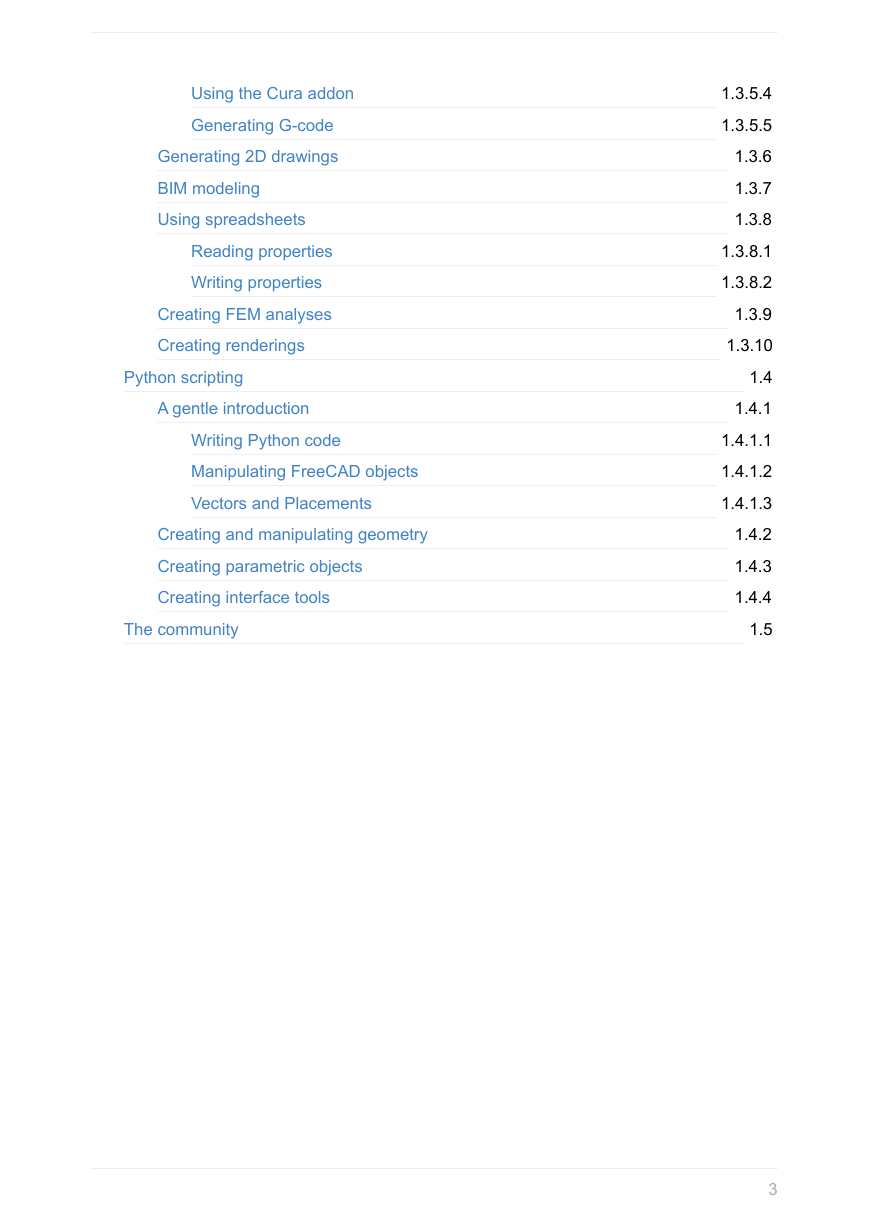
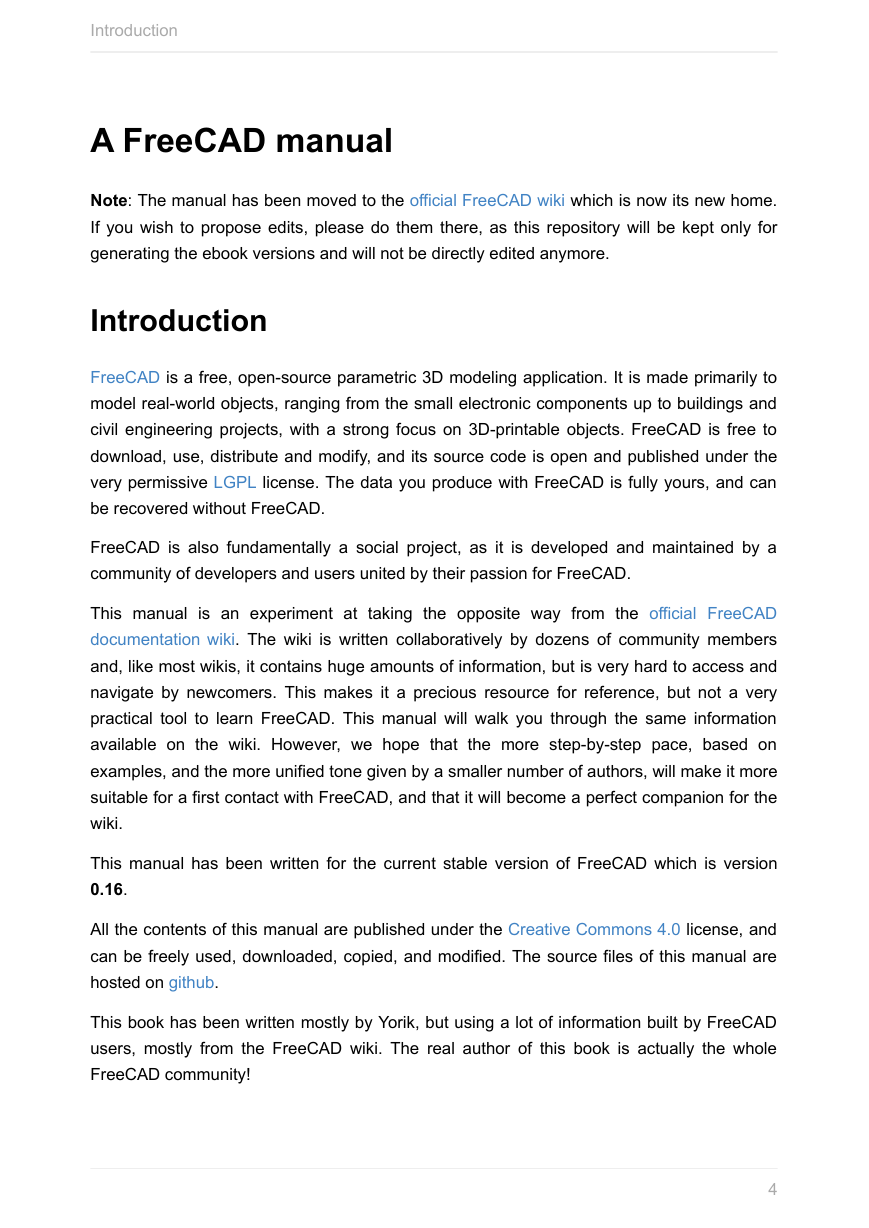

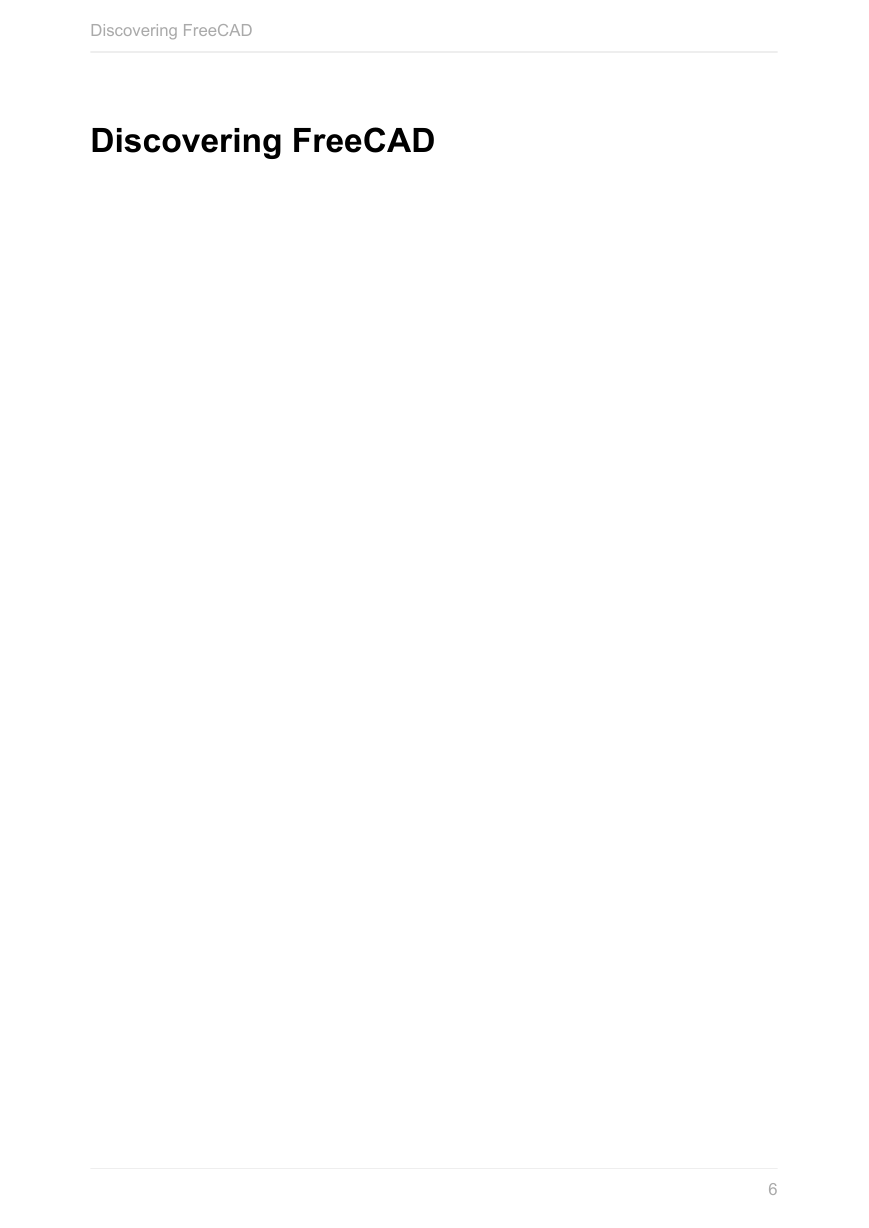

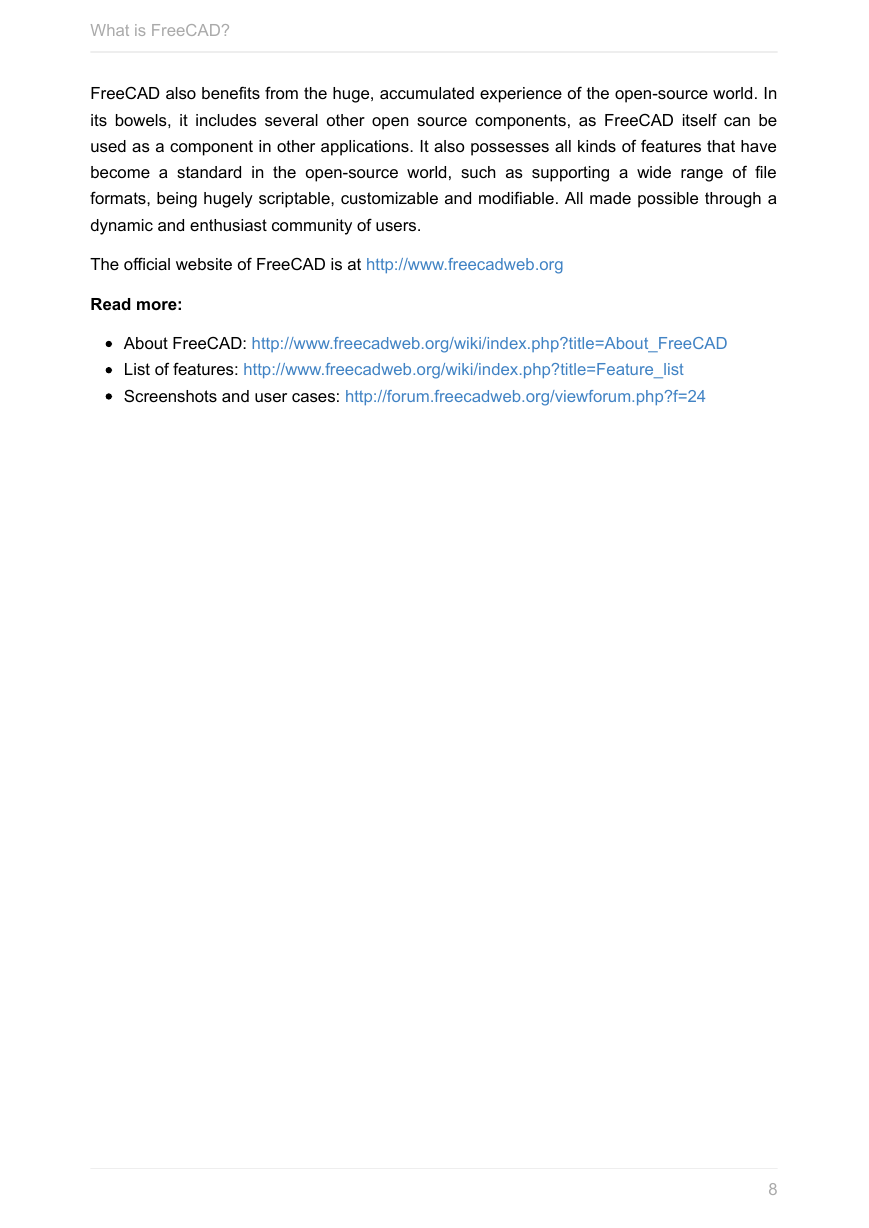








 2023年江西萍乡中考道德与法治真题及答案.doc
2023年江西萍乡中考道德与法治真题及答案.doc 2012年重庆南川中考生物真题及答案.doc
2012年重庆南川中考生物真题及答案.doc 2013年江西师范大学地理学综合及文艺理论基础考研真题.doc
2013年江西师范大学地理学综合及文艺理论基础考研真题.doc 2020年四川甘孜小升初语文真题及答案I卷.doc
2020年四川甘孜小升初语文真题及答案I卷.doc 2020年注册岩土工程师专业基础考试真题及答案.doc
2020年注册岩土工程师专业基础考试真题及答案.doc 2023-2024学年福建省厦门市九年级上学期数学月考试题及答案.doc
2023-2024学年福建省厦门市九年级上学期数学月考试题及答案.doc 2021-2022学年辽宁省沈阳市大东区九年级上学期语文期末试题及答案.doc
2021-2022学年辽宁省沈阳市大东区九年级上学期语文期末试题及答案.doc 2022-2023学年北京东城区初三第一学期物理期末试卷及答案.doc
2022-2023学年北京东城区初三第一学期物理期末试卷及答案.doc 2018上半年江西教师资格初中地理学科知识与教学能力真题及答案.doc
2018上半年江西教师资格初中地理学科知识与教学能力真题及答案.doc 2012年河北国家公务员申论考试真题及答案-省级.doc
2012年河北国家公务员申论考试真题及答案-省级.doc 2020-2021学年江苏省扬州市江都区邵樊片九年级上学期数学第一次质量检测试题及答案.doc
2020-2021学年江苏省扬州市江都区邵樊片九年级上学期数学第一次质量检测试题及答案.doc 2022下半年黑龙江教师资格证中学综合素质真题及答案.doc
2022下半年黑龙江教师资格证中学综合素质真题及答案.doc